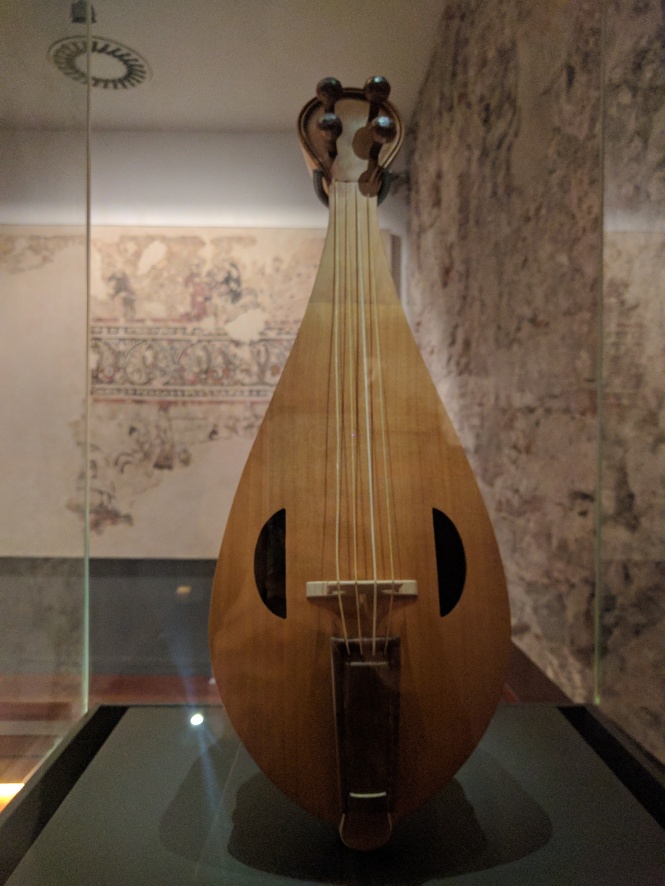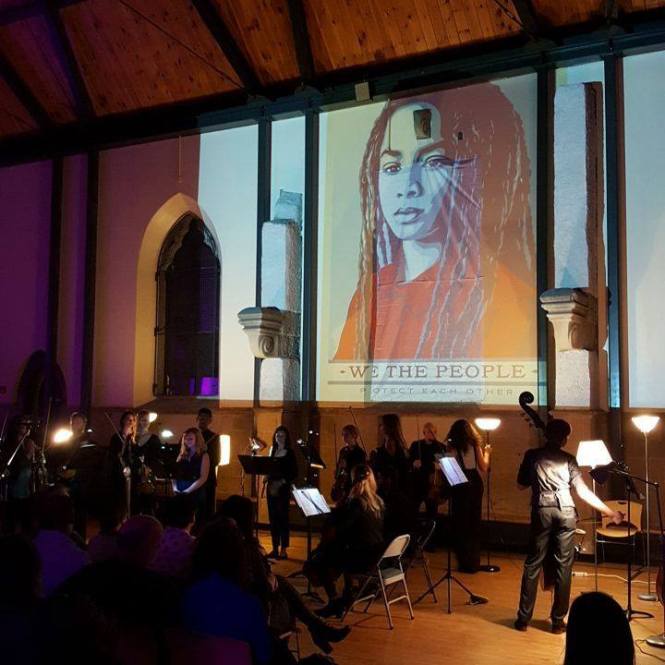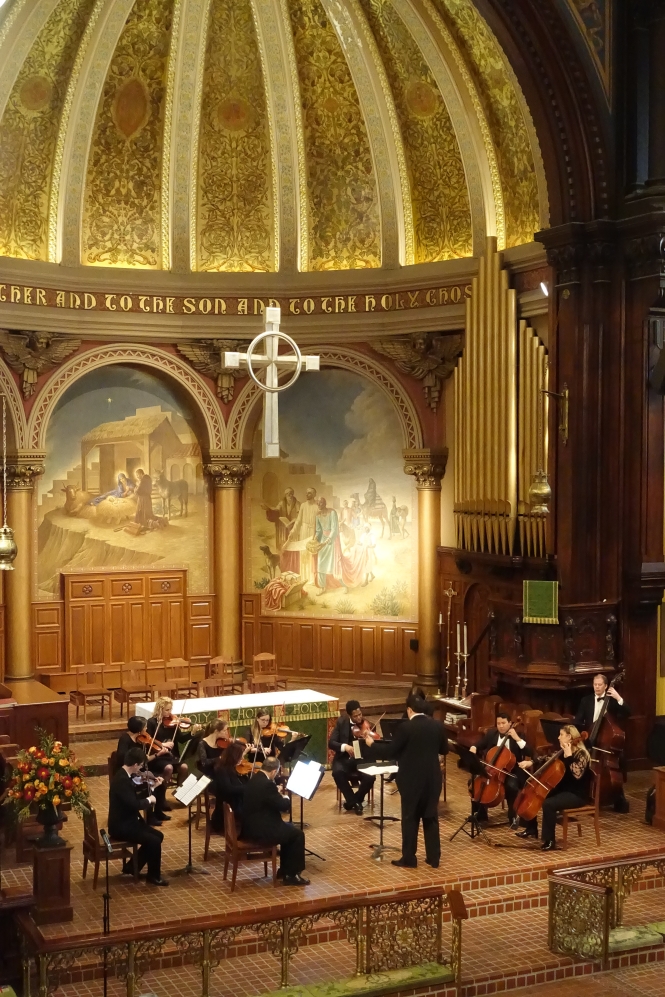One of the many things I enjoy about attending the AIMS festival is meeting musicians from all over the United States – and often from other countries around the world – and having the opportunity to play music with them. Especially exciting for me is that the orchestra’s schedule allows for time to play chamber music, something I wrote about in a post a few years ago. This summer, I was worried that my late arrival at the festival would preclude me from finding a group to play with since many chamber ensembles are determined in that first week of rehearsals when everyone is getting to know each other.
I play in a quartet on a regular basis at home, but it is more accurately referred to as a “wedding quartet” or a “gigging quartet” because our music tends to be entirely in the light classical or popular music genres. This type of ensemble certainly requires a specific skill set, but it feels very different from what string players affectionately call chamber music. What sets real chamber music apart is the desire of all musicians (four in a string quartet, in this case) to study a piece of music and make it into something unique. Conversely, the goal of wedding quartets is often to replicate a song or a style that their client heard on the radio or from a CD. There’s much more depth to chamber music.
Luckily, I was asked if I was interested in playing a Schulhoff quartet! I had no idea who Schulhoff was – and it was only thanks to Google that I eventually learned how to spell his name – but I was excited to learn something new! As it happens, Edwin Schulhoff was a Czech composer born at the end of the 19th century whose career was encouraged by composers such as Antonin Dvorak, Max Reger, and Claude Debussy. His distinct styles changed throughout his life, and he died in August 1942 at the Wülzburg concentration camp near Weißenburg, Bavaria at the age of 48.
Schulhoff’s String Quartet No. 1 was completed in Prague on September 20, 1924 and was premiered the following year in Venice. We read the entire String Quartet No.1 at our first rehearsal, but decided that we could only reasonably study two of the movements and prepare them for performance in the time we had available. The first movement, Presto con fuoco, sounds a bit like it should be accompaniment to an aggressive and primitive folk dance, and this movement is also described as having a distinct “huskiness.” The score of this first movement is pretty straightforward and easy to put together, but our challenge was to make it more interesting by bringing out phrases and ensemble considerations that were only hinted at in the printed parts.
The third movement, Allegro giocoso alla Slovacca, is not shy about its Slovakian-inspired melody, and it is in this movement that some of Schulhoff’s more “experimental” sounds can be heard. Saltato and sautille, left hand pizzicato, artificial harmonics, and col legno can all be found in this movement. As we learned through the middle part of this movement, Subito meno (allegretto grazioso), sometimes just knowing how to do execute a technique is much easier than actually performing your part with the other musicians. After a few frustrating rehearsals, we decided to break down this excerpt as carefully as possible, enlisting the help of our cellist who counted aloud as we fit all of our acrobatics inside the beat.
Our Kammermusik concert last Tuesday was at 7:30pm in the Franziskanerkirche, a short walk from the Studentenheim where we were living. The church and monastery were founded by the Franciscan order in the first half of the 13th century, but it was largely gutted by a bomb in World War II. We walked past rows of stone markers with the names of many distinguished noblemen who were buried at the church from the 1400-1700s to get to the “green room” area before our performance. Unluckily for us, beautiful churches often make awful performance spaces because of the way they reverberate sound. It was made clear during our sound check that the fast tempos that we had worked so hard to achieve would simply not work in the Franziskanerkirche. It was disappointing to have to make the decision to play slower for the sake of clarity, but it also made our performance more uncomfortable because we didn’t get a chance to actually rehearse at this new tempo. Nonetheless, our performance was well-received, and I am so glad to have been a part of this quartet!
Katherine Dennis, violin 1
Lauren Scott, violin 2
Julius Wirth, viola
Allan Steele, cello
Other works featured on this program included Mendelssohn’s Quartet No. 6 Op.80, Ravel’s Quartet in F Op. 35, Busch’s Divertimento for Clarinet, Oboe, and English Horn Op. 62b, I Crisantemi by Puccini, and Three Kurpian Songs (Wyrzundzei sie dziwce moje, Oj wyjizdjoj, and U woz mamo) by Michal Spisak sung by an AIMS Tenor who spoke the Polish dialect of the work.





















